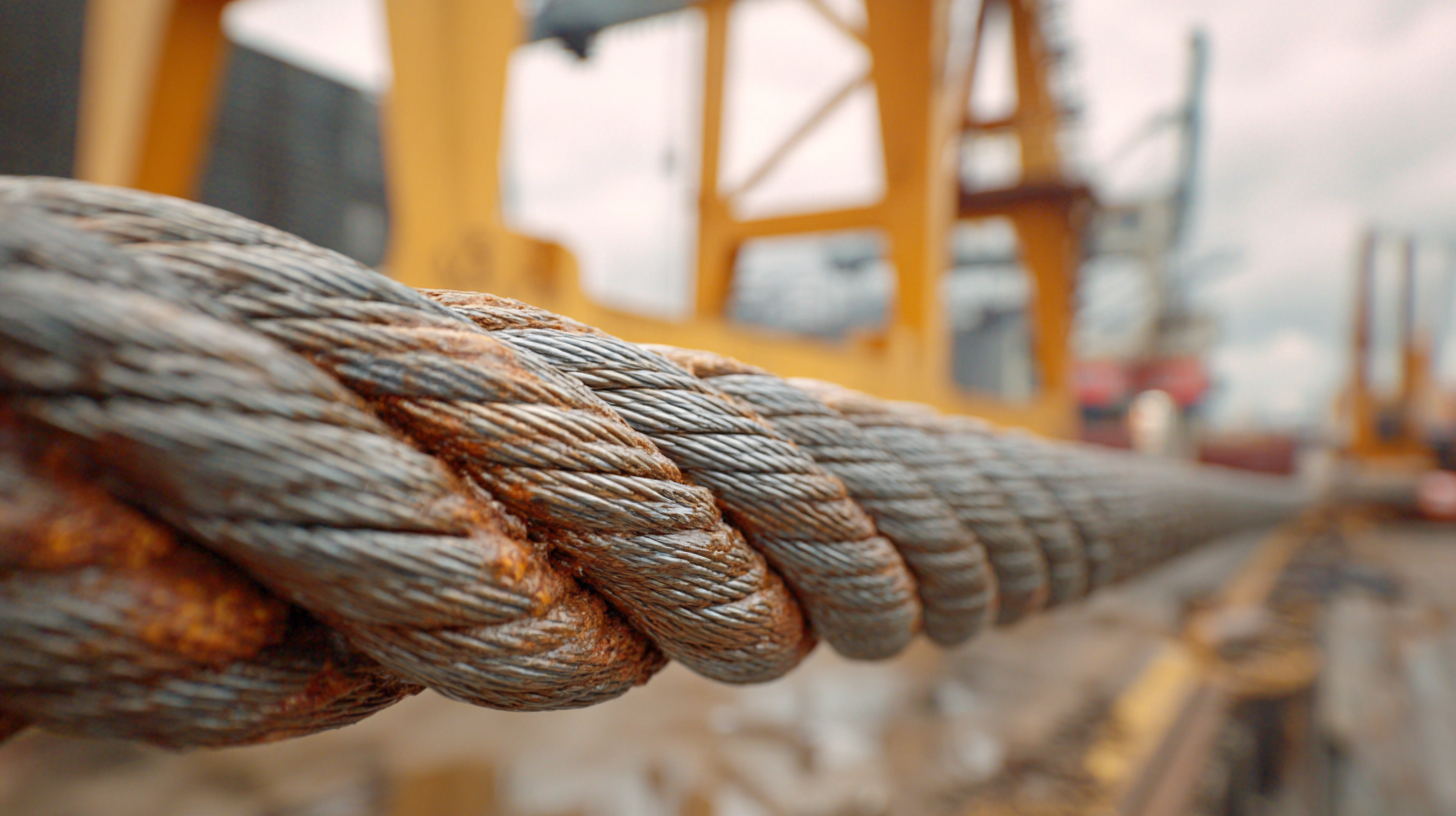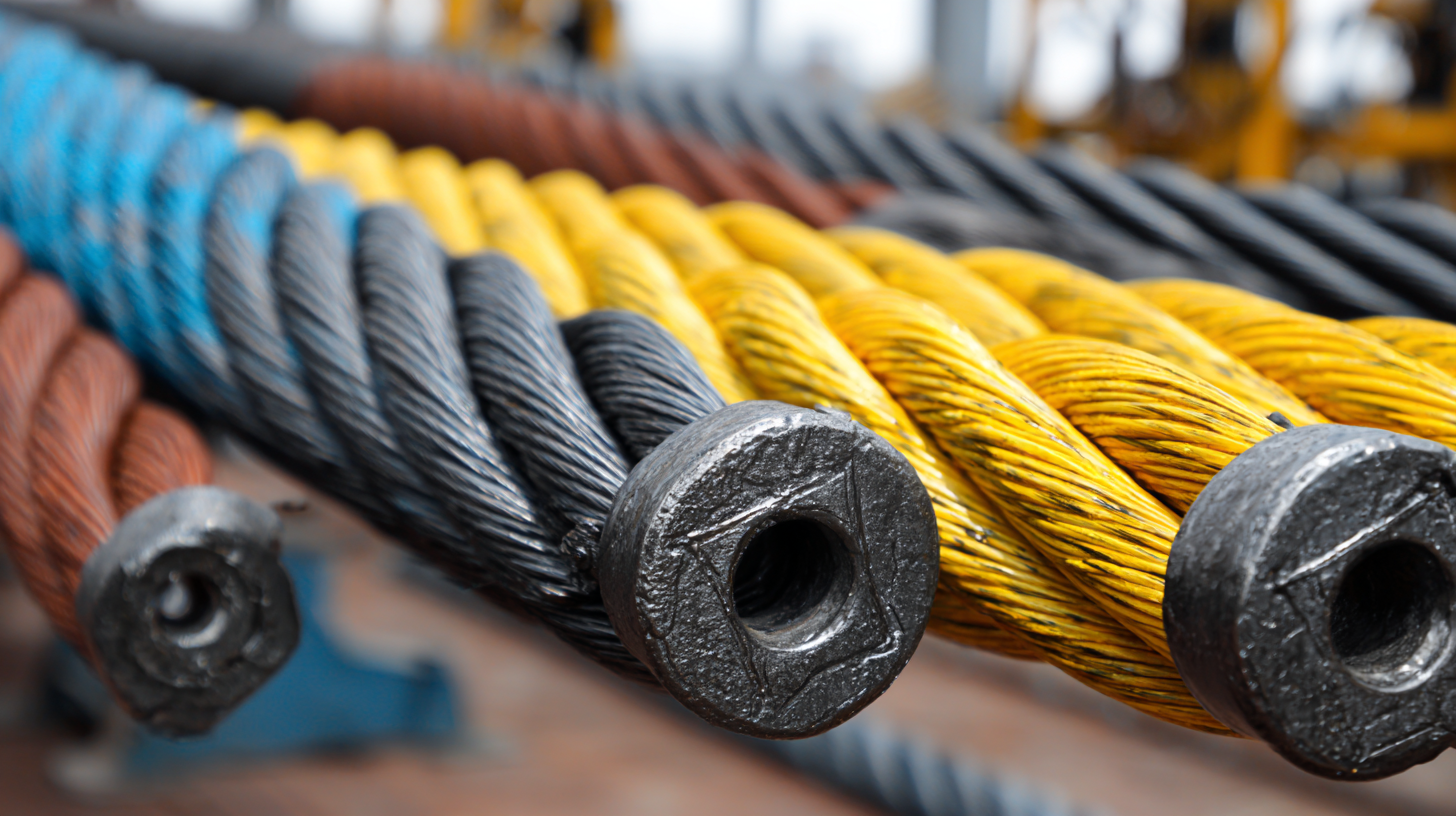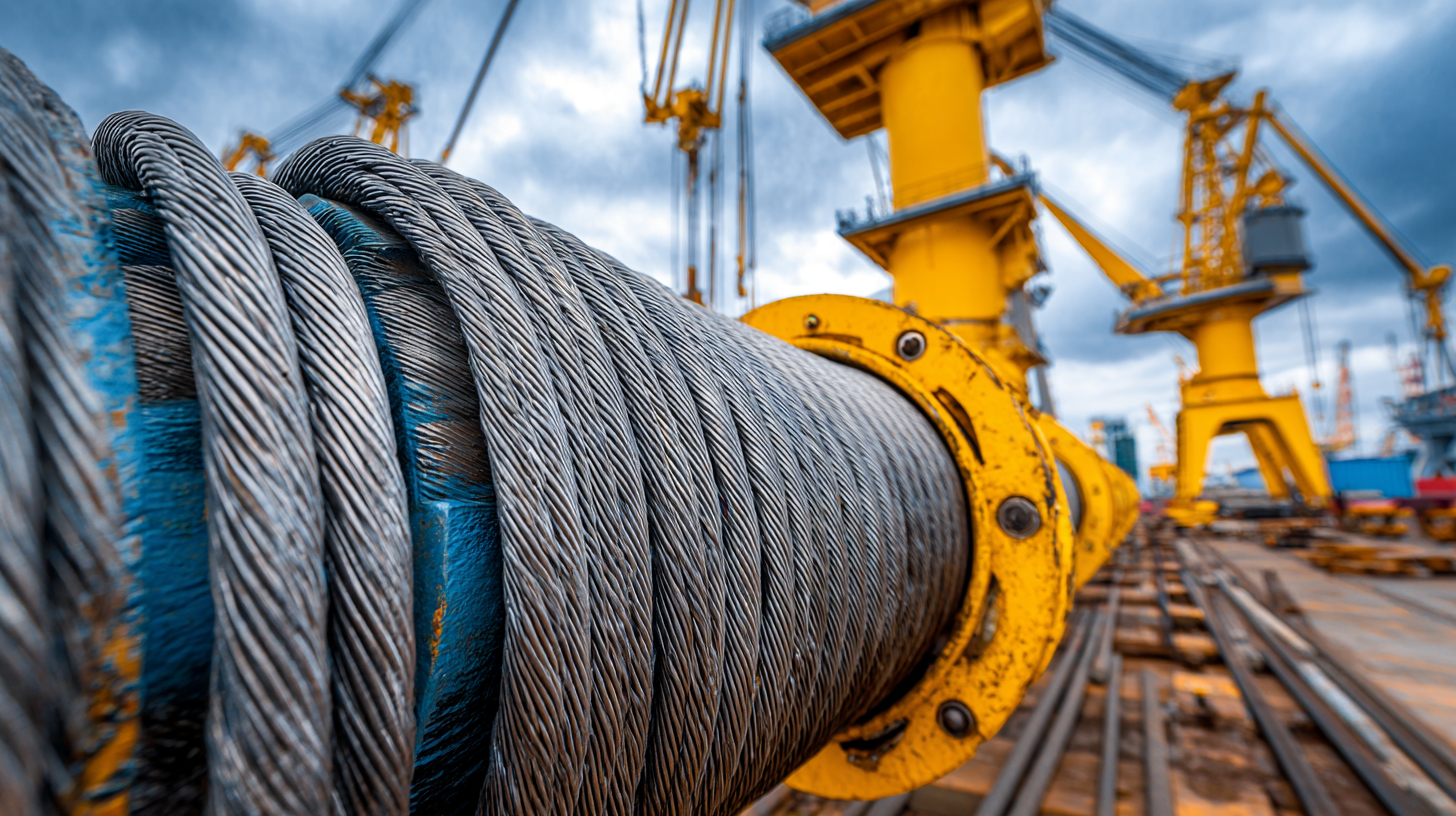In the realm of heavy lifting and industrial applications, the significance of a reliable Lifting Wire Rope Assembly cannot be overstated. These assemblies are designed to provide exceptional tensile strength and flexibility, making them indispensable in various sectors, from construction and maritime operations to manufacturing and maintenance. The unique features of lifting wire rope assemblies, such as their construction materials, design configurations, and load-bearing capacities, play a crucial role in determining their performance and suitability for specific tasks. This blog will delve into the diverse types of lifting wire rope assemblies available in the market, exploring their distinct characteristics and applications. By understanding the nuances of these assemblies, users can make informed decisions to enhance safety and efficiency in their operations, ensuring that they select the best lifting solutions for their needs.

When exploring lifting wire rope assemblies, understanding their key features is crucial for selecting the most suitable option for your needs. One of the primary considerations is the type of wire rope used, which significantly affects the assembly’s strength and durability. Typically, wire ropes are made from high-carbon steel, stainless steel, or synthetic materials, each offering distinct advantages. High-carbon steel is favored for its impressive load-bearing capacity, while stainless steel provides better corrosion resistance, making it ideal for marine or harsh environments.
Another important feature to consider is the construction of the wire rope assembly itself. Various constructions, such as twisted, braided, or stranded ropes, determine the assembly’s flexibility, abrasion resistance, and overall performance. Additionally, look for innovations like high-performance coatings or advanced core designs, which enhance the durability and lifespan of the ropes. Understanding these key features not only helps in selecting the right lifting wire rope assembly but also ensures safety and efficiency in lifting operations across various applications.

Lifting wire rope assemblies are essential components across various industries, providing robust solutions for heavy lifting and transporting heavy materials. In the construction sector, for instance, the global lifting equipment market is projected to reach $96 billion by 2025, highlighting the increasing reliance on lifting wire ropes for cranes and hoists. Their strength and flexibility make them ideal for use in mining operations, where they are critical for transporting ores and other heavy loads. A report from Research and Markets indicates that the mining segment is expected to grow at a CAGR of 6.4% between 2020 and 2025, showcasing the importance of reliable lifting solutions in this field.
When considering lifting wire rope assemblies, it's crucial to choose the right type based on the specific application. For instance, stainless steel wire ropes are preferred in marine environments due to their corrosion resistance, while fiber core ropes may be more suitable for industries requiring flexibility and light weight.
**Tip:** Regular inspection and maintenance of lifting wire rope assemblies can significantly prolong their lifespan and ensure safety during operations. According to OSHA standards, it is recommended to inspect lifting equipment at least once per month and replace any worn or damaged components immediately to avoid accidents and downtime.
When utilizing lifting wire rope assemblies, adhering to safety guidelines is paramount to ensure both the wellbeing of personnel and the integrity of the equipment. First and foremost, it is crucial to inspect the wire rope before each use. Look for any signs of wear, fraying, or damage, as these can compromise the lifting capacity and increase the risk of failure. Additionally, understanding the working load limit (WLL) of the assembly is vital. Never exceed this limit, and always account for potential dynamic loads that may occur during lifting operations.
Proper usage techniques also play a significant role in maintaining safety. Operators should be trained and familiar with the equipment, ensuring they know how to properly rig the assembly and distribute the load evenly. Using appropriate pulleys and ensuring that the cable is not twisted or kinked can greatly enhance operational safety. Moreover, conducting regular maintenance checks and being aware of environmental factors, such as wind or ground stability, can help mitigate risks associated with lifting operations. By following these essential guidelines, users can enhance safety and efficiency in their lifting processes.

Lifting wire rope assemblies are essential tools used across various industries, particularly in construction and public works. To ensure their longevity and reliability, regular maintenance is crucial. One of the most effective maintenance tips is to routinely inspect the wire ropes for any signs of wear, such as fraying or corrosion. Early detection of such issues allows for timely repairs or replacements, which can prevent more significant failures during critical operations.
Proper lubrication is another vital aspect of maintaining lifting wire rope assemblies. Applying the appropriate lubricant not only minimizes friction but also helps to protect the wire strands from environmental factors like moisture and contaminants. Additionally, storing these assemblies in a clean, dry location away from direct sunlight can significantly extend their lifespan. By adhering to these simple yet effective maintenance strategies, users can enhance the durability and performance of their lifting wire rope assemblies, ensuring safer and more efficient operations in the field.
| Feature | Description | Applications | Maintenance Tips |
|---|---|---|---|
| Material | typically made from steel or synthetic materials | Heavy lifting in construction, marine, and mining | Regular inspection for wear and corrosion |
| Diameter | varies, affecting strength and flexibility | Used in cranes, winches, and hoists | Ensure correct diameter for specific load capacities |
| Construction | stranded or braided configurations | Lifting operations across various industries | Lubricate regularly to reduce friction and wear |
| Load Capacity | rated based on diameter and material | Transporting heavy machinery and materials | Avoid exceeding load limits to prevent damage |
| Safety Features | may include protective coatings and safety ratings | Construction, manufacturing, and logistics | Follow safety guidelines during use |
When selecting the right lifting wire rope assembly for your project, several crucial factors must be considered. First and foremost, you should evaluate the load capacity required for your specific application. Each wire rope assembly is designed to handle particular weight limits, so choose one that exceeds your maximum load to ensure safety and longevity.
Tips: Always consult the manufacturer's specifications to understand the breaking strength and safety factors of the lifting wire rope. This information is pivotal in preventing accidents and ensuring efficient operation on-site.
Another important aspect is the environmental conditions in which the lifting wire rope will operate. Factors like exposure to moisture, chemicals, and extreme temperatures can significantly affect the performance and durability of the wire rope. Selecting materials that are corrosion-resistant or designed for harsh environments is essential for maintaining the integrity of your equipment.
Tips: Consider using wire rope assemblies with protective coatings or those specifically engineered for heavy-duty use in aggressive environments. This will help in reducing wear and prolonging the lifespan of your lifting system.
